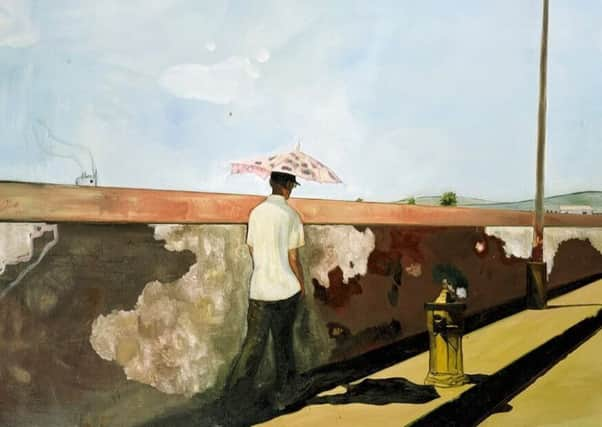Book review: Morning, Paramin by Derek Walcott and Peter Doig


On the face of it this collaboration between the Nobel Prize-winning poet Derek Walcott, born in St Lucia in the West Indies, and the internationally renowned Scottish painter Peter Doig, who has lived in Trinidad since 2002, should be a wonderful meeting of minds – and in many ways it is. In the light of Macmillan’s analysis of the relationship between text and image, however, it is also somewhat problematic.
Walcott has written a series of 50 poems to accompany pre-existing paintings by Doig, but this book, we are informed, is “a collaboration” and a result of their “long-standing friendship and creative affinity”. So when in his response to Pelican Island Walcott describes its “Rothko sky”, you have to wonder: is this Walcott’s own observation, or is the Rothko-ness of the sky perhaps something that came up in discussion with Doig during the collaborative process? Similarly, in his response to 100 Years Ago (Carrera), Doig’s arresting yet ambiguous painting of a gaunt-looking man in an oversized red canoe, Walcott writes: “The canoe is a hyphen between centuries, / between generations.” It’s an intriguing reading of the image, but again: did it come from Walcott or from Doig? And even if it came from Walcott, now that it has appeared in a publication effectively co-authored by the artist, has it become the “official” reading? If you happened to interpret this mysterious painting differently before, can you still cling to your own interpretation now?
Advertisement
Hide AdThat said, if you can look beyond these conceptual difficulties there are plenty of instances here where word and image come together in perfect harmony – almost literally in the case of Walcott’s response to Doig’s nocturnal forest scene Milky Way, in which the music of the spheres really is musical: “A tenor pan repeating its high note / flowers of brass coronets, maracas stars, / an alto sax’s interrupting throat, / a burst of rain from drizzling guitars.”
*Morning, Paramin by Derek Walcott and Peter Doig is published by Faber & Faber, £22